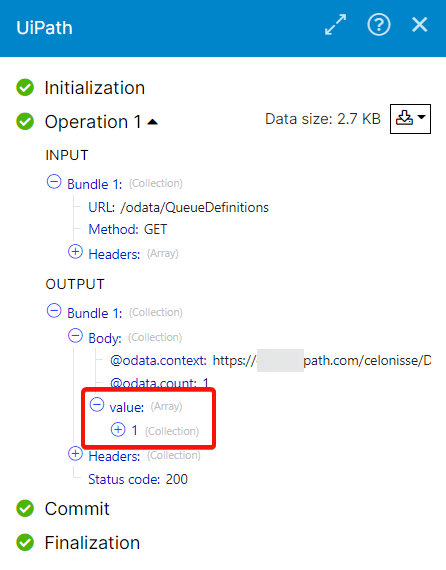UiPath (on-prem) (Action Flow)
UiPath Robots interact with screens, systems, and applications to automate day-to-day tasks such as copy-pasting the data, making calculations, moving the files, etc.
Action Flows are very powerful in automating the systems that offer API integration. To provide full UI automation or automation of systems that don't allow for API integration, use a combination of Actions Flows with UiPath Robots.
In action flows you can start a new job and add items to a queue in your UiPath account.
To get started with UiPath, create an account at uipath.com/.
Connect UiPath (on-prem) to Celonis Platform
Install the on-prem client on the machine where you plan to use the UiPath (on-prem) module. See Installing on-prem clients.
Create the UiPath on-prem connection. See Creating on-prem system connections. When doing this, select the HTTP application type, and the URL of the location where UiPath is installed.
In Celonis Platform, go to Studio and create a new Action Flow.
In the Action Flow screen, select the UiPath (on-prem) module and select a job you want it to perform.
Configure the module:
Select the Connection type to UiPath (On-Prem).
From the system connection dropdown, select the Celonis Agent created in the previous step.
In the Domain URL, provide the location of the Ui-Path.
Provide credentials of the Ui-Path user.
Provide the name of the Ui-Path tenant.
Save.
Job
A Job is the trigger event of a process. Each job is an instance of a robot running the process.
To start a UiPath job in action flows, you need to select the process, and a robot to execute the selected process.
Start a Job
Starts a UiPath job by triggering a selected process.
Connection | Establish a connection to your UiPath account. The UiPath (on-prem) module only works with the Celonis on-prem client. To see how to establish an on-prem connection in Celonis Platform, see Creating on-prem system connections. |
Select UiPath Folder | Select or map the UiPath folder that contains the process you want to execute. |
Select UiPath Process | Select the UiPath process to start the job. You must create a process in your UiPath account. |
Select UiPath Robots | Select a robot to execute the process. You can select multiple robots. You must configure robots in your UiPath account. |
Add Input Arguments (Optional) | If there are any input variables configured for the process in your UiPath account, they would be shown in the app when you select the process. You can either enter the data manually or use the output values from the previous apps. |
Queue
In UiPath, a queue is a container of data held so other bots or applications can use it. Users create queues in their UiPath account.
From the Action Flows, we allow the users to fill in these queues with the data (key/value pair) to be picked up by the jobs or other applications.
Add an Item to a Queue
Adds an item to a queue.
Connection | Establish a connection to your UiPath account |
Select UiPath Folder | Select or map the folder that contains the queue for which you want to add the items. 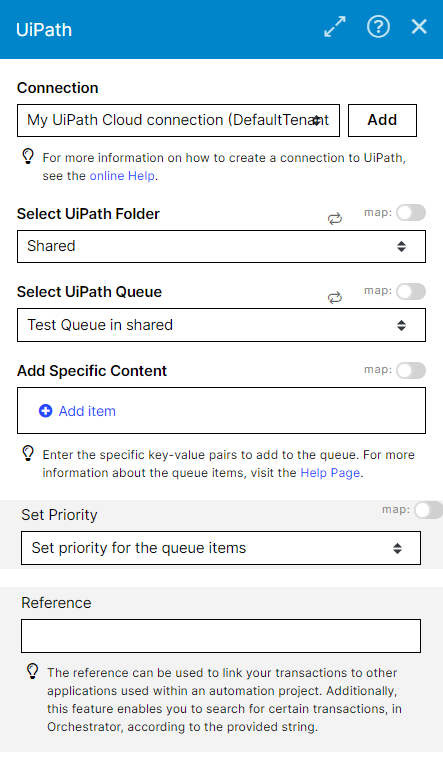 |
Select UiPath Queue | Select or map the queue to which you want to add the items. The Map function allows a user to map a value from one of the previous modules instead of selecting a queue from the dropdown list. 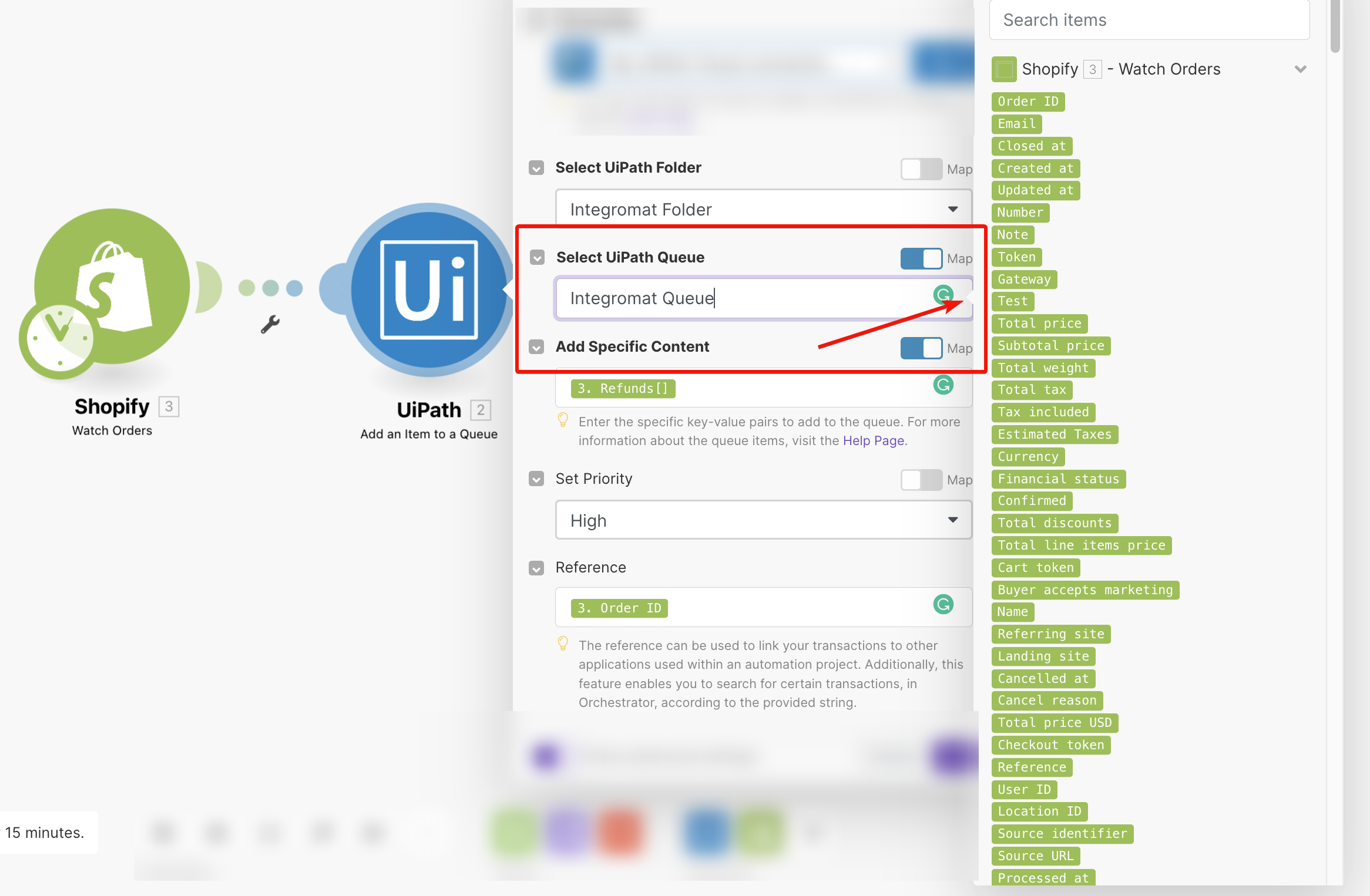 |
Add Specific Content | Enter or map the specific Key-Value pair to add the items to the queue. For more information about the queue items, see queue item requests. 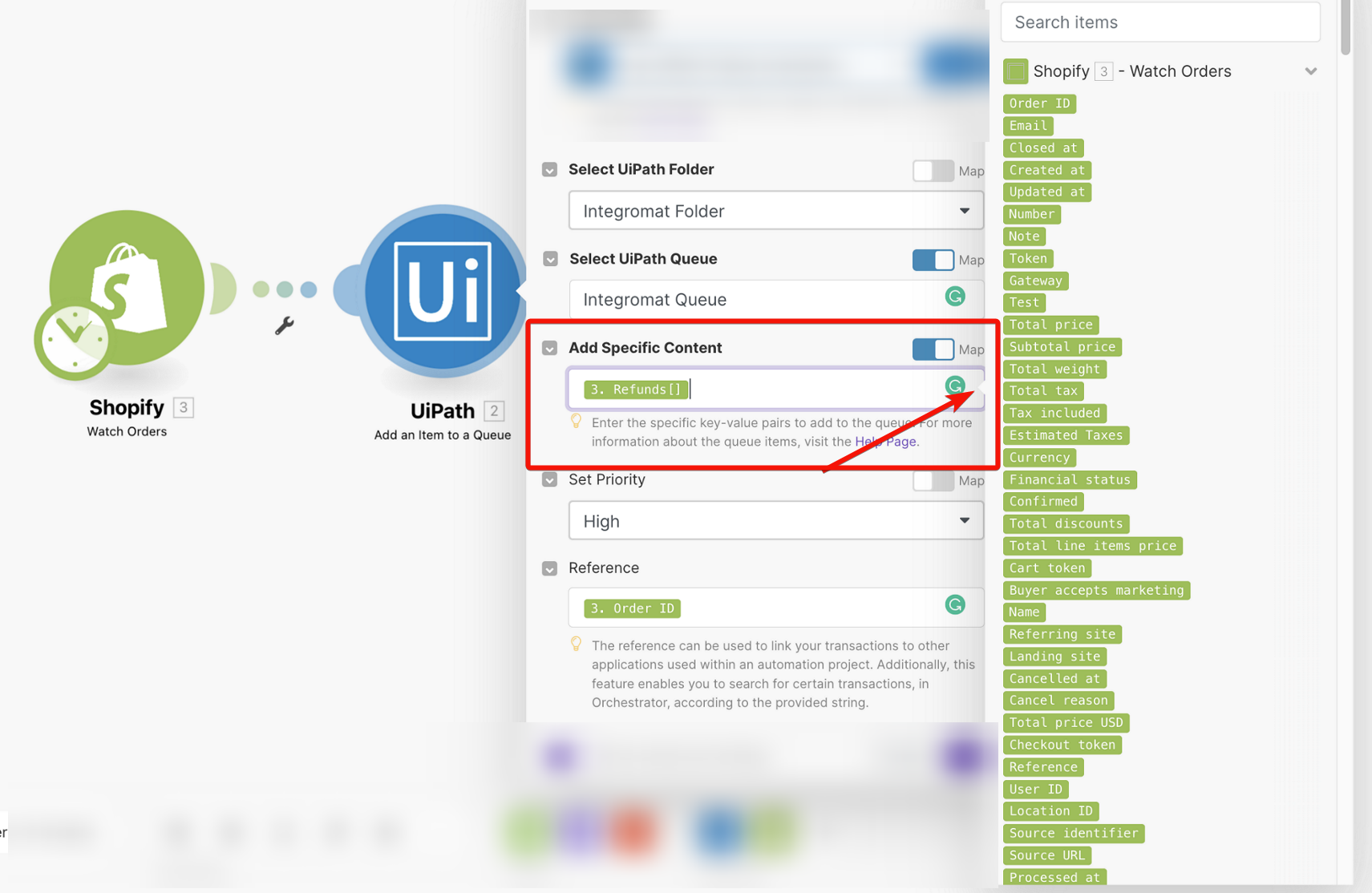 |
Set Priority (Advanced Settings) | From the Priority list, select the item's priority. The items are arranged in the queue for processing based on the priority set.
|
Reference (Advanced Settings) | Enter or map the reference to link your transactions to other applications used within an automation project. Additionally, this reference enables you to search for certain transactions, in UiPath Orchestrator, according to the provided string. |
Other
Make an API Call
Performs an arbitrary authorized API call.
Connection | Establish a connection to your UiPath account. |
URL | Enter a path relative to |
Method | Select the HTTP method you want to use: GET to retrieve information for an entry. POST to create a new entry. PUT to update/replace an existing entry. PATCH to make a partial entry update. DELETE to delete an entry. |
Headers | Enter the desired request headers. You don't have to add authorization headers; we already did that for you. |
Query String | Enter the request query string. |
Body | Enter the body content for your API call. |
Example of Use - Get Folders
The following API call returns all the folders from your UiPath account:
URL
/odata/QueueDefinitions
Method
GET
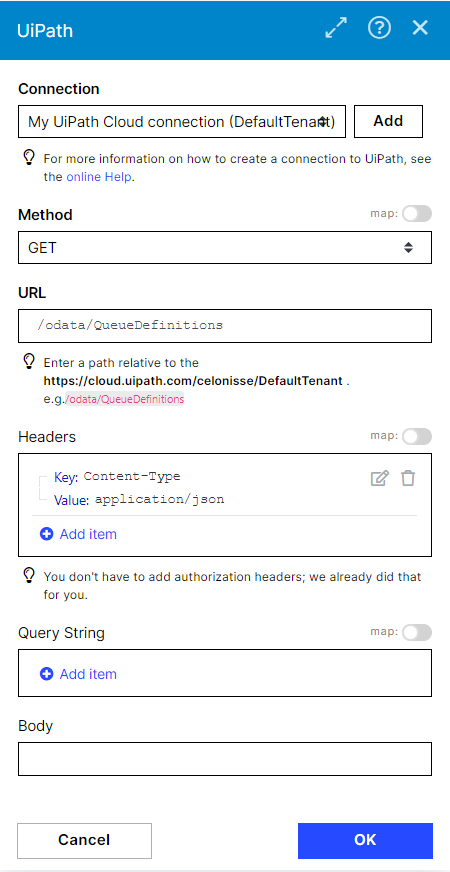
Matches of the search can be found in the module's Output under Bundle > Body > value.
In our example, 1 folder is returned:
